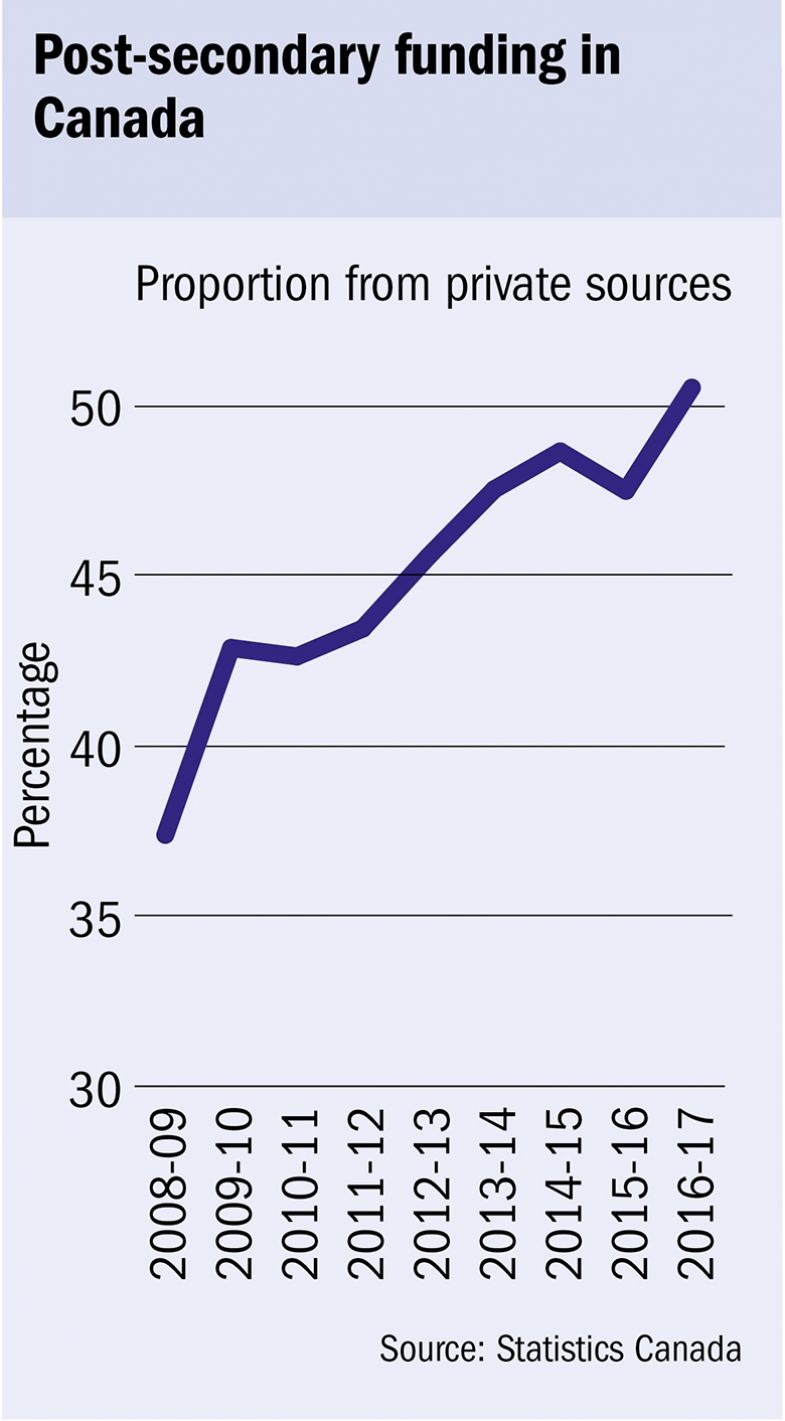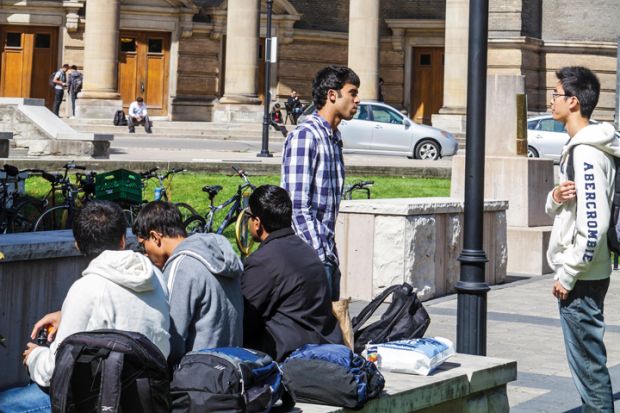Canadian higher education is growing ever more reliant on foreign enrolment, to the point where public money is no longer the chief source of income for the nation’s universities, an analysis has found.
Post-secondary funding in Canadian provinces hit a peak in 2010-11 of C$22 billion (£13.5 billion), in constant 2016 dollars, before declining now to the level of about C$21 billion, the report by Higher Education Strategy Associates says.
Students – especially foreign ones, who are charged more than three times as much in tuition and fees – have been making up the difference. Tuition fee revenues rose from C$8.1 billion to C$13.7 billion between 2007-08 and 2016-17, as the share of college spending not covered by provinces rose from C$6.1 billion to C$12 billion.
Along with taxpayers getting some short-term benefit, domestic students appear to be feeling relief. More of them are taking expensive science classes and working fewer hours to support themselves, the analysis shows.

Canadian institutions and their students will eventually face tougher times, and perhaps should be doing more now to anticipate it, said Alex Usher, the president of Higher Education Strategy Associates, the Toronto-based consulting service that writes the analysis each year.
One main danger at the moment, Mr Usher warned, was that an overreliance on foreigners might eventually leave colleges – and their wider communities – with large numbers of alumni who lacked deep ties to the area and would not support it in the long run.
“I personally wouldn’t predict imminent trouble,” Mr Usher said. “But eventually, yes, there needs to be a reckoning and a rebalancing.”
Some see significant problems already lurking. Along with institutions in Ontario, where public funding of higher education significantly lags national averages, the University of British Columbia is facing faculty discontent over numbers showing that its fast growth in students – with more than a quarter now coming from abroad – has not been accompanied by corresponding gains in teaching staff.
Student enrolment at British Columbia grew 52 per cent between 2006 and 2018, while total faculty increased just 8.2 per cent, according to numbers from the UBC Faculty Association. The numbers have been cited by Nassif Ghoussoub, a professor of mathematics who serves on the institution’s board of governors, as evidence that “the massive increases in international student enrolments and revenues” were not being shared fully across the institution.
Either way, the sharp growth in foreign enrolment at Canadian institutions appears to be helping to transform the student experience nationwide. The new annual survey of first-year students, conducted by the Canadian University Survey Consortium, shows that 44 per cent of freshers self-identify as a member of a visible minority – three times the level of 2001.
That figure is 35 per cent if not counting international students, which indicates a level of minority identification well above nationwide averages for younger Canadians overall, Mr Usher said. That’s contrary to most countries where members of minority groups are much less likely than average to attend college.




